Special Session
Special Session I: Internet of Things (IoT) Platforms
08:20-10:00, October 28 (Wednesday), 2015
| Time | Title | Invited Speakers |
|---|---|---|
| 08:20-10:00 | Open Source oneM2M Platforms | Mr. Jaeho Kim Director KETI |
| Internet of Things (IoT) and Open Interconnect Consortium | Mr. Jooyeol Lee Director Samsung Electronics |
|
| IoT Enabler, from the Things to the Services and Service Platform | Dr. Byung K. Lim Vice President InterDigital Asia |
Invited Talk 1: ”Open Source oneM2M Platforms”
Mr. Jaeho Kim, Director, KETI
Abstract:
The Internet of Things (IoT) is gaining ground in various vertical domains such as healthcare, home automation and public services. Since IoT connects all smart objects and enables them to communicate with each other, the intelligent services introduced by IoT will provide a huge impact on our everyday life. However, this requires a common and open platform satisfying all different needs from various stakeholders and verticals. In order for such a common service platform to be useful, an international standard is required to support interoperability. This talk, therefore, will provide the effort of oneM2M standardization activities for IoT/M2M common service platforms. Finally, this talk will introduce an open source IoT service platform, which is called Mobius, implementing oneM2M standards and establishing a global IoT ecosystem with the global use of IoT/M2M devices and software.
The Internet of Things (IoT) is gaining ground in various vertical domains such as healthcare, home automation and public services. Since IoT connects all smart objects and enables them to communicate with each other, the intelligent services introduced by IoT will provide a huge impact on our everyday life. However, this requires a common and open platform satisfying all different needs from various stakeholders and verticals. In order for such a common service platform to be useful, an international standard is required to support interoperability. This talk, therefore, will provide the effort of oneM2M standardization activities for IoT/M2M common service platforms. Finally, this talk will introduce an open source IoT service platform, which is called Mobius, implementing oneM2M standards and establishing a global IoT ecosystem with the global use of IoT/M2M devices and software.
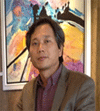 |
Biography: Mr. Jaeho Kim is a managerial researcher in Embedded Software Convergence Research Center at the Korea Electronics Technology Institute (KETI), South Korea from 2000. He is directing the research team for IoT and M2M Platform in KETI. His expertise covers wireless sensor networks, medium access protocols, and Internet of Things platforms. He is now serving as Chair of IoT Convergence Service Project Group of Telecommunications Technology Association (TTA) and Chair of Device Working Group of Korea IoT Association. He received the BS and MS degrees in Computer Science and Engineering from the Hankuk University of Foreign Studies, South Korea, in 1996 and 2000, respectively. Currently, he is a Ph.D. candidate in the Electrical and Electronic Engineering from the Yonsei University, South Korea. His research interests are in the areas of wireless sensor |
networks, medium access protocols, and Internet of Things.
Invited Talk 2: ”Internet of Things (IoT) and Open Interconnect Consortium”
Mr. Jooyeol Lee, Director, Samsung Electronics
Abstract:
The Internet of Things (IoT) has been introduced in many areas but is subject to various definitions and interpretations among vendors, academia and governments. In most cases, IoT consists of sensors/actuators, networks, cloud/intelligence, etc. From a standards viewpoint, one of the key areas in IoT is communication interoperability among things to enable discovery, message exchanges and use of vertical resources. In this presentation, to provide interoperability for IoT, key design principles such as a way of defining things, supported type of things, level of interoperability and technology accessibility will be presented. The Open Interconnect Consortium (OIC) is a comparatively new organization which adopts these kinds of design principles to support the IoT concept and is designed to provide interoperable technology to the IoT industry as a whole. The current progress of OIC as well as the upcoming certification program will also be presented.
The Internet of Things (IoT) has been introduced in many areas but is subject to various definitions and interpretations among vendors, academia and governments. In most cases, IoT consists of sensors/actuators, networks, cloud/intelligence, etc. From a standards viewpoint, one of the key areas in IoT is communication interoperability among things to enable discovery, message exchanges and use of vertical resources. In this presentation, to provide interoperability for IoT, key design principles such as a way of defining things, supported type of things, level of interoperability and technology accessibility will be presented. The Open Interconnect Consortium (OIC) is a comparatively new organization which adopts these kinds of design principles to support the IoT concept and is designed to provide interoperable technology to the IoT industry as a whole. The current progress of OIC as well as the upcoming certification program will also be presented.
 |
Biography: Mr. Jooyeol Lee is a distinguished standards expert as well as a leading innovative service layer standardization leader in Samsung Electronics. He has actively contributed and held leading roles in several service level standard bodies for more than 12 years such as Digital Living Network Alliance, Universal Plug and Play, Wi-Fi Alliance, Mobile Printing Alliance, and Car Connectivity. During the period, he chaired several working groups and made strategic decisions as a Board Director. He also led and coordinated among peer companies to form new alliances which required exact market analysis and technical differentiation. He is now leading the Open Interconnect Consortium Standard Working Group (WG) as Chair. The Standard WG is unique as it creates the strategy of a standards ecosystem and leverages market driven technologies. With strong leadership, the first set of |
specifications has been completed within a very short timeframe to meet market needs, including a certification program. The focus of this group is to try to understand ecosystem requirements and pick the right technologies to achieve better interoperability for IoT devices. He is currently a Director of Samsung Electronics and leads IoT standards strategy and technology development. His current interests include heterogeneous connectivity, platforms and resource modeling for multiple business verticals such as home, healthcare and industrial internet.
Invited Talk 3: ”IoT Enabler, from the Things to the Services and Service Platform”
Dr. Bekay (Byung Keun) Lim, Vice President, InterDigital Asia
Abstract:
Internet of things (IoT) has been known as one of the inevitable business solutions of the next generation communication services. And we know that there are a lot of technologies, standards, and products providing the IoT services from the chips to servers, from personal scale services to enterprise scale services regardless of the past story. On the other hand, many of the key experts in the market players are skeptical about the IoT business, since there are no concrete and visible solutions making money and backup of the investment of the IoT business yet. Similarly, we are continuously being concerned about the future of the IoT business even though we believe that the IoT will be the key services of the next generation communication networks. Considering the concerns, this talk investigates and analyzes the barriers and enablers of the IoT business in terms of the services, regulations and products through the ecosystems of the IoT business. This talk also introduces how to define and analyze the possibility of success of the IoT services among a myriad of services. Lastly, we suggest several key enablers making the IoT business become the money making business against current technologies, regulations, and market situations.
Internet of things (IoT) has been known as one of the inevitable business solutions of the next generation communication services. And we know that there are a lot of technologies, standards, and products providing the IoT services from the chips to servers, from personal scale services to enterprise scale services regardless of the past story. On the other hand, many of the key experts in the market players are skeptical about the IoT business, since there are no concrete and visible solutions making money and backup of the investment of the IoT business yet. Similarly, we are continuously being concerned about the future of the IoT business even though we believe that the IoT will be the key services of the next generation communication networks. Considering the concerns, this talk investigates and analyzes the barriers and enablers of the IoT business in terms of the services, regulations and products through the ecosystems of the IoT business. This talk also introduces how to define and analyze the possibility of success of the IoT services among a myriad of services. Lastly, we suggest several key enablers making the IoT business become the money making business against current technologies, regulations, and market situations.
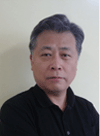 |
Biography: Dr. Byung Keun Lim is InterDigital’s Vice President, InterDigital Asia Labs. As Head of InterDigital Asia LLC, Dr. Lim is responsible for directing the development of advanced wireless and network technologies, the evolution of standards-based technologies and the company’s participation in wireless standards bodies as well as office operations in Asia Labs. He joined InterDigital Asia in January 2015 from the Airtech Systems in Korea, where he had served as Chief Technology Officer (CTO) of Engineering since 2013. Prior to his appointment at the Airtech Systems, he had served as Chief Operational Officer (COO) in a start-up venture company for the smartphone’s touch & display panel component. He also had worked for ArrayComm Korea LLC as the President of the Korea office from 2005 to 2009. Prior to his appointment at the ArrayComm Korea, Dr. Lim was with LG |
Electronics from 1995 to 2005 as a Principal Engineer and Chief Manger of the system R&D division. He has a strong history of industry leadership. He has contributed to commercialize the IS-95 standard based CDMA cellular systems as the world’s first commercial product in 1996, and also commercialized the cellular data services based on IS-657 based asynchronous data and G3 Fax services as the world’s first commercial product in 1998. He had led to make a standard and PDSN and GGSN products for the packet data systems of the 1xEV-DO, and WCDMA in 2001. He also had served as a delegate of professional organizations including the Telecommunication Technology Association in Korea, the Next Generation Network Promotion Group, and 3rd Generation Partnership Project 2 Technical Specification Group, and a number of others. He was awarded the prestigious IR52 ChangYoungSil award in 1998 for the world’s first CDMA cellular data services system commercialization. Dr. Lim received his Bachelor’s degree in Electronics Engineering from Hanyang University, Seoul, Korea, in 1984, and his Master’s degree and Doctoral degree in Electrical & Electronics Engineering from KAIST, Korea, in 1986 and 1991, respectively.
Special Session II: Internet of Things (IoT) Connectivity
16:00-17:40, October 28 (Wednesday), 2015
| Session | Title | Invited Speakers |
|---|---|---|
| 16:00-17:40 | Participatory Sensing – from Algorithms to Practices | Dr. Harold Liu Professor Beijing Institute of Technology |
| Internet of Things (IoT) Connectivity Standards | Dr. Han Gyu Cho Director LG Electronics |
|
| Optical Camera Communication based D2D Services | Dr. Yu Zeng Research Manager Beijing Research Institute China Telecom |
Invited Talk 4: ”Participatory Sensing – from Algorithms to Practices”
Dr. Harold Liu, Professor, Beijing Institute of Technology
Abstract:
Smart devices including smart phones, smart pads, and tablets are used not only as a means of communication mobile devices of choice, but also as powerful sensing units with a rich set of embedded sensors such as accelerometer, digital compass, gyroscope, GPS, microphone, camera, etc. Collectively, these sensors are enabling a new type of applications that can recruit ordinary citizens to collect and share sensory data, and ultimately give rise to a new area of research, called “participatory sensing”. By using these embedded sensors, the ordinary citizens act as “participants” to sense multi-dimensional data streams from the surrounding environment and share these streams using existing communication infrastructure. Participatory sensing has shown its great potential in retrieving context-aware information across a wide variety of application domains, such as healthcare, social networks, safety, environmental monitoring and transportation, for academia, industry and government agencies. This talk will introduce not only the fundamental concept of participatory sensing, but also its algorithms, protocols, systems, and applications, to ensure to recruit an optimal set of participants to perform the sensing tasks.
Invited Talk 5: ”Internet of Things (IoT) Connectivity Standards”
Invited Talk 6: ”Optical Camera Communication based D2D Services”
Invited Talk 7: “Spectrum Management based on Spectrum Database for the 5G and beyond Wireless World”
Smart devices including smart phones, smart pads, and tablets are used not only as a means of communication mobile devices of choice, but also as powerful sensing units with a rich set of embedded sensors such as accelerometer, digital compass, gyroscope, GPS, microphone, camera, etc. Collectively, these sensors are enabling a new type of applications that can recruit ordinary citizens to collect and share sensory data, and ultimately give rise to a new area of research, called “participatory sensing”. By using these embedded sensors, the ordinary citizens act as “participants” to sense multi-dimensional data streams from the surrounding environment and share these streams using existing communication infrastructure. Participatory sensing has shown its great potential in retrieving context-aware information across a wide variety of application domains, such as healthcare, social networks, safety, environmental monitoring and transportation, for academia, industry and government agencies. This talk will introduce not only the fundamental concept of participatory sensing, but also its algorithms, protocols, systems, and applications, to ensure to recruit an optimal set of participants to perform the sensing tasks.
 |
Biography: Dr. Harold Liu received his Ph.D. degree in Electronic Engineering from Imperial College, UK in 2010, and B.Eng. degree in Electronic and Information Engineering from Tsinghua University, China in 2006. He is currently a Full Professor at the School of Software, Beijing Institute of Technology, China. He also serves as the Head of Department of Software Service Engineering, Director of IBM Mainframe Excellence Center (Beijing), Director of IBM Big Data and Analysis Technology Center, and Director of National Laboratory of Data Intelligence for China Light Industry. Before moving to academia, Prof. Liu worked for IBM Research - China as a staff researcher and project manager from 2010 to 2013, as a postdoctoral researcher at Deutsche Telekom Laboratories, Berlin, Germany in 2010, and as a visiting scholar at IBM T. J. Watson Research Center, USA in 2009. His current |
research interests include the Internet-of-Things (IoT), Big Data analytics, mobile computing, and wireless ad hoc, sensor, and mesh networks. Prof. Liu was elected into the “High-level Overseas Talents Return Home Program” pool, approved by the Ministry of Human Resource and Social Security (MHRSS), China in 2015. He also received the Distinguished Young Scholar Award in 2013, IBM First Plateau Invention Achievement Award in 2012, and IBM First Patent Application Award in 2011 and was interviewed by EEWeb.com as the Featured Engineer in 2011. Prof. Liu has published more than 60 prestigious conference and journal papers and owned more than 10 EU/U.S./China patents. He served as the editor for KSII Trans. on Internet and Information Systems and the book editor for seven books published by Taylor & Francis Group, USA. He also has served as the General Chair of IEEE SECON'13 workshop on IoT Networking and Control, IEEE WCNC'12 workshop on IoT Enabling Technologies, and ACM UbiComp'11 Workshop on Networking and Object Memories for IoT. He served as the international consultant to Asian Development Bank, Bain & Company, and KPMG, USA, and the peer reviewer for Qatar National Research Foundation, and National Science Foundation, China.
Invited Talk 5: ”Internet of Things (IoT) Connectivity Standards”
Dr. Han Gyu Cho, Director, LG Electronics
Abstract:
The interest in Internet of Things (IoT) has been drastically increasing due to the pervasiveness of wired and wireless communications and the demand on new services. IoT consists of many functional blocks from sensors and connectivity technologies such as Wi-Fi, Bluetooth, ZigBee, and etc. to the various services which eventually provide new values to the clients. This talk briefly provides the overview of IoT and details on the IoT connectivity standards which are mainly considered in the market.
The interest in Internet of Things (IoT) has been drastically increasing due to the pervasiveness of wired and wireless communications and the demand on new services. IoT consists of many functional blocks from sensors and connectivity technologies such as Wi-Fi, Bluetooth, ZigBee, and etc. to the various services which eventually provide new values to the clients. This talk briefly provides the overview of IoT and details on the IoT connectivity standards which are mainly considered in the market.
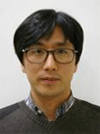 |
Biography: Dr. HanGyu Cho received his B.S., M.S., and Ph.D. degrees in Electrical and Electronic Engineering from Yonsei University, Seoul, Korea, in 1999, 2001, and 2005, respectively. For two years from September 2005, he was with the Wireless Networking and Communications Group (WNCG), The University of Texas at Austin as a post-doctoral research associate. In 2007, he joined LG Electronics and has worked for Standardization of 4G technologies, e.g., WiMAX and LTE/LTE-A. From 2012, he has been working on Wi-Fi standardization and also researching on IoT connectivity. |
Invited Talk 6: ”Optical Camera Communication based D2D Services”
Dr. Yu Zeng, Research Manager, Beijing Research Institute, China Telecom
Abstract:
China Telecom operates the world's largest fixed network, CDMA2000 mobile network and broadband networks, gained strong technical strength on mobile communications, network gateways, and IPv6 technologies. China Telecom started the visible light communication (VLC) research in 2013, and actively participated in industry, domestic and international standard organizations including the IEEE 802.15.7. China Telecom is one of the first operators to get involved in VLC standards, continue to contribute to VLC-related IEEE 802 standards and promote viable VLC techniques. For mobile devices, projects “e-trans” and “dynamic QR code” paved the way for possible VLC applications. Demonstrations were developed using different screen coding. The link can achieve transfer data rate up to 80Mb/s. This will provide possible solutions for VLC systems. For industrial applications, large shopping malls, banks and stations can take advantages of LED lighting bulbs, and be treated as small "hot spots", deliver capabilities such as advertising and promotion vouchers, membership information, store APP client and even indoor navigation. VLC can also bring more possibilities to public transport service companies. VLC systems are economical, convenient, interference free and can be easily applied within the constrained space. For the tourism industry, using VLC technology enables better information delivery when other connection methods are limited, and can also provide statistical analysis through mobile applications. The VLC technology is one of the future trends for short range communications. The industry can take advantages from the knowledge and experience provided by telecom operators.
China Telecom operates the world's largest fixed network, CDMA2000 mobile network and broadband networks, gained strong technical strength on mobile communications, network gateways, and IPv6 technologies. China Telecom started the visible light communication (VLC) research in 2013, and actively participated in industry, domestic and international standard organizations including the IEEE 802.15.7. China Telecom is one of the first operators to get involved in VLC standards, continue to contribute to VLC-related IEEE 802 standards and promote viable VLC techniques. For mobile devices, projects “e-trans” and “dynamic QR code” paved the way for possible VLC applications. Demonstrations were developed using different screen coding. The link can achieve transfer data rate up to 80Mb/s. This will provide possible solutions for VLC systems. For industrial applications, large shopping malls, banks and stations can take advantages of LED lighting bulbs, and be treated as small "hot spots", deliver capabilities such as advertising and promotion vouchers, membership information, store APP client and even indoor navigation. VLC can also bring more possibilities to public transport service companies. VLC systems are economical, convenient, interference free and can be easily applied within the constrained space. For the tourism industry, using VLC technology enables better information delivery when other connection methods are limited, and can also provide statistical analysis through mobile applications. The VLC technology is one of the future trends for short range communications. The industry can take advantages from the knowledge and experience provided by telecom operators.
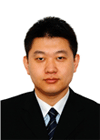 |
Biography: Dr. Yu Zeng received his BSc degree in Physics from Beijing Jiaotong University in 2001, MSc and PhD degrees in Optical Wireless Communication from the University of Warwick, UK in 2003 and 2008, respectively. He joined China Telecom in 2011. His area of interests include optical wireless communication, cloud computing and Internet of Things. He leads the Visible Light Communication (VLC) research team in China Telecom. He developed solutions for providing data transmission between mobile devices and indoor navigation employing VLC. He is a recipient of the 2015 Innovation Grant from China Telecom. Dr. Yu Zeng served as the Vice Chair of IEEE 802.15.7r1 standard committee (focusing on optical camera communication and LiFi), a Chartered Engineer, and a senior consultant for national high technology research and development program (863 project). |
Special Session III: 5G Requirements and Enabling Technologies
09:00-10:40, October 29 (Thursday), 2015
| Time | Title | Invited Speakers |
|---|---|---|
| 09:00-10:40 | Spectrum Management based on Spectrum Database for the 5G and beyond Wireless World | Dr. Takeo Fujii Professor Advanced Wireless and Comm. Research Center University of Electro-Communications, Japan |
| 5G Enabling Technologies for Enhanced Mobile Broadband, Low Latency and High Reliability, and Massive IoT | Mr. Chulsik Yoon Managing Director ETRI |
|
| Nokia 5G Radio Aspects and Architecture | Dr. Brian Cho Head of Technology for APAC & Japan Nokia |
Invited Talk 7: “Spectrum Management based on Spectrum Database for the 5G and beyond Wireless World”
Dr. Takeo Fujii, Professor, Advanced Wireless and Communication Research Center, The University of Electro-Communications, Japan
Abstract:
The spectrum management is a key issue for sustainable growth of future wireless communication systems. Due to the rapidly increasing number of wireless devices, not only smart phones but also terminals for IoT, the scarcity of the spectrum suitable for mobile communications becomes a serious problem in the 5G and beyond wireless world. Currently, each spectrum band is allocated to an individual system without any spectrum sharing in the same area except for the very limited spectrum, e.g., the spectrum for the wireless LAN. However, this kind of monopolized spectrum allocation policy degrades the spectrum efficiency because lots of unused spectrum remained in the temporal domain and the spatial domain. In future wireless communication systems, we need to consider dynamic sharing of the spectrum among multiple systems for realizing the highly efficient spectrum utilization. In 5G mobile communications, it is required to consider spectrum sharing such as authorized shared access (ASA), unsilenced LTE (U-LTE), TV white space, and public safety. Moreover, dynamic autonomous spectrum management shifted from the fixed spectrum allocation is an important issue for creating a new wireless world. In this presentation, to effectively manage the limited resource of spectrum, we show the concept of hierarchical spectrum database where a hierarchical structure is considered. A lower layer database collects information about the local radio and network environment like measured received power, connectivity of terminals, type of data packets and so on by user terminals, and the information is statistically stored. By using the information, the spectrum and network environment can be known. This kind of information is transferred and summarized at the higher layer and dynamical spectrum management considering the demands of users and also spectrum efficiency can be achieved. Therefore, more flexible and dynamic spectrum allocation can be realized. At the highest layer, a global spectrum allocation policy can be defined for deciding the basic spectrum utilization policy managed by regulators. A spectrum management of the hierarchical spectrum database is based on big data of radio and network environment collected by a huge amount of user terminals. The spectrum database can help the channel management of not only the current spectrum shared bands like 2.4GHz and 5GHz but also the new spectrum shared bands based on ASA and other future spectrum sharing system with new technologies.
Invited Talk 8: “5G Enabling Technologies for Enhanced Mobile Broadband, Low Latency and High Reliability, and Massive IoT”
The spectrum management is a key issue for sustainable growth of future wireless communication systems. Due to the rapidly increasing number of wireless devices, not only smart phones but also terminals for IoT, the scarcity of the spectrum suitable for mobile communications becomes a serious problem in the 5G and beyond wireless world. Currently, each spectrum band is allocated to an individual system without any spectrum sharing in the same area except for the very limited spectrum, e.g., the spectrum for the wireless LAN. However, this kind of monopolized spectrum allocation policy degrades the spectrum efficiency because lots of unused spectrum remained in the temporal domain and the spatial domain. In future wireless communication systems, we need to consider dynamic sharing of the spectrum among multiple systems for realizing the highly efficient spectrum utilization. In 5G mobile communications, it is required to consider spectrum sharing such as authorized shared access (ASA), unsilenced LTE (U-LTE), TV white space, and public safety. Moreover, dynamic autonomous spectrum management shifted from the fixed spectrum allocation is an important issue for creating a new wireless world. In this presentation, to effectively manage the limited resource of spectrum, we show the concept of hierarchical spectrum database where a hierarchical structure is considered. A lower layer database collects information about the local radio and network environment like measured received power, connectivity of terminals, type of data packets and so on by user terminals, and the information is statistically stored. By using the information, the spectrum and network environment can be known. This kind of information is transferred and summarized at the higher layer and dynamical spectrum management considering the demands of users and also spectrum efficiency can be achieved. Therefore, more flexible and dynamic spectrum allocation can be realized. At the highest layer, a global spectrum allocation policy can be defined for deciding the basic spectrum utilization policy managed by regulators. A spectrum management of the hierarchical spectrum database is based on big data of radio and network environment collected by a huge amount of user terminals. The spectrum database can help the channel management of not only the current spectrum shared bands like 2.4GHz and 5GHz but also the new spectrum shared bands based on ASA and other future spectrum sharing system with new technologies.
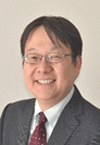 |
Biography: Prof. Takeo Fujii received the B.E., M.E. and Ph.D. degrees in Electrical Engineering from Keio University, Yokohama, Japan, in 1997, 1999 and 2002 respectively. From 2000 to 2002, he was a research associate in the Department of Information and Computer Science, Keio University. From 2002 to 2006, he was an assistant professor in the Department of Electrical and Electronic Engineering, Tokyo University of Agriculture and Technology. From 2006 to 2014, he has been an associate professor in Advanced Wireless Communication Research Center, The University of Electro-Communications, Japan. Currently, he is a full professor in Advanced Wireless and Communication Research Center, The University of Electro-Communications. His current research interests are in the areas of cognitive radio and ad-hoc wireless networks. He received Best Paper Award in IEEE VTC |
1999-Fall, 2001 Active Research Award in Radio Communication Systems from IEICE technical committee of RCS, 2001 Ericsson Young Scientist Award, Young Researcher's Award from the IEICE in 2004, The Young Researcher Study Encouragement Award from IEICE technical committee of AN in 2009, and Best Paper Award in IEEE CCNC 2013. He is a member of IEEE and IEICE.
Invited Talk 8: “5G Enabling Technologies for Enhanced Mobile Broadband, Low Latency and High Reliability, and Massive IoT”
Mr. Chulsik Yoon, Managing Director, ETRI
Abstract:
5G is the next generation of mobile communications realizing the vision of ubiquitous connectivity for any kind of devices and any kind of applications. In the 2020s when the commercial 5G services will be launched, new paradigms will emerge. The existing infra-centric wireless world will be replaced by the user-centric world. Users and things will be connected through a wireless network at anytime and anywhere in a flexible and affordable way. They will also have the context-aware intelligence so that the users can experience a various kinds of novel services. This talk will introduce 5G enabling technologies in terms of three categories, i.e., enhanced mobile broadband, low latency and high reliability, and massive IoT. This talk will also briefly discuss the opportunities and challenges of these enabling technologies.
Invited Talk 9: “Nokia 5G Radio Aspects and Architecture”
Invited Talk 10: “System Architectures, Mathematical Modeling, and Algorithms for Holographic Three-Dimensional Displays”
Invited Talk 11: “Holography-like High Density Multiview 3D Display for Realistic Visual Effect”
Invited Talk 12: “Core Technologies and Challenges in Augmented Reality and Virtual Reality”
Invited Talk 13: “Joint Mobile Power Management for OS, Network, and Service“
Invited Talk 14: “Cellular Terminal Modem Development Trends and Future Prospects”
Invited Talk 15: “Wi-Fi Offloading: Mobile CDN’s Perspective”
Invited Talk 16: “Enabling Real-time Centralized Optimization for Global-Scale Video Delivery”
Invited Talk 17: “Operator Issues Towards the Next Step for SDN/NFV”
Invited Talk 18: “Beyond Features and Performance: SDN/NFV Security and Robustness”
5G is the next generation of mobile communications realizing the vision of ubiquitous connectivity for any kind of devices and any kind of applications. In the 2020s when the commercial 5G services will be launched, new paradigms will emerge. The existing infra-centric wireless world will be replaced by the user-centric world. Users and things will be connected through a wireless network at anytime and anywhere in a flexible and affordable way. They will also have the context-aware intelligence so that the users can experience a various kinds of novel services. This talk will introduce 5G enabling technologies in terms of three categories, i.e., enhanced mobile broadband, low latency and high reliability, and massive IoT. This talk will also briefly discuss the opportunities and challenges of these enabling technologies.
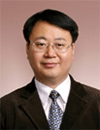 |
Biography: Mr. Chulsik YOON is serving as Managing Director of Wireless Transmission Research Department, ETRI. The Wireless Transmission Research Department has the responsibility for performing technology-leading R&D for the 5G mobile communications, which is divided into the standard-leading R&D and the fundamental-technology-leading R&D. First part focuses on current standard items such as massive-MIMO antenna technologies and LTE-based licensed-assisted access (LAA) technologies. Second part deals with the fundamental and futuristic research topics related with the above 5G goals such as low latency and ultra-high reliability RAN, In-band Full Duplex (IFD), Ultra Dense Networks (UDN), Moving Networks (MN), and Massive Connectivity Communications. He has more than 20 years of experience on mobile communication standardization and advanced |
researches since he joined ETRI in 1993. He received a Master’s degree in Physics from Pohang University of Science and Technology (POSTECH), KOREA. He has more than 100 issued patents.
Invited Talk 9: “Nokia 5G Radio Aspects and Architecture”
Dr. Brian Cho, Head of Technology for APAC & Japan, Nokia
Abstract:
The fourth generation mobile communications (4G) such as LTE is well accepted by many markets, and this fast market adoption on LTE drives the industry to the next level of innovation towards the fifth generation mobile communications (5G). It is believed that 5G will not only enhance ‘mobile broadband’ but also enhance or enable ‘massive machine type communications’ and ‘ultra reliable and low latency communications’. The diverse use cases lead to diverse requirements ranging from peak data rate and spectrum efficiency to latency and connection density. Therefore, 5G will require flexible architecture. In this talk, Nokia 5G radio aspect will be firstly explained such as physical layer design fundamental, frame structure, and numerology. Then, Nokia’s view on 5G architecture will be explained. With the flexible 5G architecture, various benefits can be realized such as scalability, network as a service, session on demand, mobility on demand, and reliability.
The fourth generation mobile communications (4G) such as LTE is well accepted by many markets, and this fast market adoption on LTE drives the industry to the next level of innovation towards the fifth generation mobile communications (5G). It is believed that 5G will not only enhance ‘mobile broadband’ but also enhance or enable ‘massive machine type communications’ and ‘ultra reliable and low latency communications’. The diverse use cases lead to diverse requirements ranging from peak data rate and spectrum efficiency to latency and connection density. Therefore, 5G will require flexible architecture. In this talk, Nokia 5G radio aspect will be firstly explained such as physical layer design fundamental, frame structure, and numerology. Then, Nokia’s view on 5G architecture will be explained. With the flexible 5G architecture, various benefits can be realized such as scalability, network as a service, session on demand, mobility on demand, and reliability.
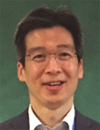 |
Biography: Dr. Brian Cho is currently working for Nokia in its Networks business as Head of Technology for APAC and Japan. He is also serving as Head of Advanced Technology Center (ATC) Korea. In this role, he is responsible for all advanced technology discussions and collaboration between Nokia, customers, and industry. Before joining Nokia in 2010, he was firstly with R&D center at KTF (a wireless operator in Korea) during 1999-2001, mainly working on the physical layer topics of IS-95 A/B and 3GPP WCDMA. In 2001, he joined wireless communications modem development team at GCT Semiconductor, developing various kinds of wireless communications modem including 3GPP Release 99 WCDMA PHY/MAC modem, Bluetooth, IEEE 802.11a/b/g Wireless LAN, DMB (Digital Multimedia Broadcasting), etc. In 2005, he joined Intel Corporation, and handled various technical topics around |
mobile broadband technologies ranging from standardization and regulatory/policy to products and network engineering in APAC region during 2005-2010. He holds the B.S. degree and the M.S. degree of Electrical Engineering, both from Seoul National University, Korea, and holds the Ph.D. degree of Electrical Engineering from Kwangwoon University, Korea. He also holds the B.S. degree of Business Administration from Korea National Open University. He holds several US patents and Korean domestic patents on wireless communications. He also wrote a few books such as “3G/4G Mobile Communication Systems – Easily explained”, and translated several books to Korean including a well-known book written by Harri Holma and Antti Toskala. His current research interests include LTE, further evolution of LTE, and future mobile communications such as 5G.
Special Session IV: Smart Media for the 5G Era
15:30-17:10, October 29 (Thursday), 2015
| Time | Title | Invited Speakers |
|---|---|---|
| 15:30-17:10 | System Architectures, Mathematical Modeling, and Algorithms for Holographic Three-Dimensional Displays | Dr. Hwi Kim Professor Dept. of Electronics and Information Engineering Korea University |
| Holography-like High Density Multiview 3D Display for Realistic Visual Effect | Dr. Sung Kyu Kim Principal Research Scientist Korea Institute of Science and Technology |
|
| Core Technologies and Challenges in Augmented Reality and Virtual Reality | Dr. Jong-Il Park Professor Dept. of Computer Science and Engineering Hanyang University |
Invited Talk 10: “System Architectures, Mathematical Modeling, and Algorithms for Holographic Three-Dimensional Displays”
Dr. Hwi Kim, Professor, Dept. of Electronics and Information Engineering, Korea University
Abstract:
Holographic three-dimensional (3D) display technology is considered as the ultimate form of realistic three-dimensional displays. However, the development status is at the very initial stage, so it is expected that the practical realization of high quality holographic 3D displays will not be seen in the near future. There are still several fundamental issues in almost all aspects of holographic 3D displays, which have to be resolved with a ground-breaking research. In this presentation, the system architectures that have been researched in our country are reviewed, and a research on mathematical modeling and simulation techniques for those holographic 3D displays is introduced. The holographic content generation is a key technology in this field. Broadly speaking, holographic 3D display is considered as one of computational displays because the content generation is carried out by non-intuitive complicated numerical algorithms. The design concepts of computational algorithms and concrete case studies of computer-generated holograms (CGHs) are presented. A fundamental study on the wave optic understanding of human eyes and perception of three-dimensional scene and theoretical analysis on the information capacity of holograms in terms of space-bandwidth-product (SBP) are also discussed. In order to display CGHs contents with the real light field, we have developed several holographic display architectures. Underlying design concepts, characteristic features, and limitations of several system architectures are briefly introduced. Perspectives on system architecture and algorithms of CGHs will also be addressed.
Holographic three-dimensional (3D) display technology is considered as the ultimate form of realistic three-dimensional displays. However, the development status is at the very initial stage, so it is expected that the practical realization of high quality holographic 3D displays will not be seen in the near future. There are still several fundamental issues in almost all aspects of holographic 3D displays, which have to be resolved with a ground-breaking research. In this presentation, the system architectures that have been researched in our country are reviewed, and a research on mathematical modeling and simulation techniques for those holographic 3D displays is introduced. The holographic content generation is a key technology in this field. Broadly speaking, holographic 3D display is considered as one of computational displays because the content generation is carried out by non-intuitive complicated numerical algorithms. The design concepts of computational algorithms and concrete case studies of computer-generated holograms (CGHs) are presented. A fundamental study on the wave optic understanding of human eyes and perception of three-dimensional scene and theoretical analysis on the information capacity of holograms in terms of space-bandwidth-product (SBP) are also discussed. In order to display CGHs contents with the real light field, we have developed several holographic display architectures. Underlying design concepts, characteristic features, and limitations of several system architectures are briefly introduced. Perspectives on system architecture and algorithms of CGHs will also be addressed.
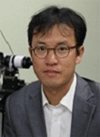 |
Biography: Prof. Hwi Kim received the B.E., M.E. and Ph.D. degrees in Electrical Engineering from Seoul National University, Korea, in 2001, 2003 and 2007 respectively. From 2010 to 2014, he was an assistant professor in the Department of Electronics and Information Engineering, Korea University. From 2014 to present, he is an associate professor in the same department. His current research interests are in holography and nanophotonics. In particular, he has a specialty in mathematical modeling and numerical algorithms in wide areas of optics and photonics. |
Invited Talk 11: “Holography-like High Density Multiview 3D Display for Realistic Visual Effect”
Dr. Sung Kyu Kim, Principal Research Scientist, Imaging Media Center, Korea Institute of Science and Technology
Abstract:
Autostereoscopic 3D display technology which removes the need for special eye glasses for 3D image and multiview 3D is being developed for commercialization nowadays. Integral Photography (IP) and Super Multi-View (SMV) will be the next generation of multiview type 3D display, and holographic 3D display is considered as the final goal technology of 3D display. There have been many attempts for the mass product commercialization of multiview 3D technology. Parallax barrier and lenticular types are the usual approaches, while the light field 3D technology has emerged as a new kind of multiview 3D display. Multiview 3D display has several problems that hinder popular utilization such as low quality and high crosstalk of 3D image, narrow viewing area caused by the limited number of viewpoints, low resolution of each viewpoint image, and eye fatigue phenomenon. Some of these problems can be solved by using real-time face or eye tracking technology, when 3D display for a single viewer is considered. However multi-user viewing and eye fatigue are still important problems. SMV 3D technology is developed to overcome those problems and High Density Multiview (HDM) 3D technology resembles characteristics of the light field and SMV types. In this talk, we introduce recent developments in HDM 3D displays.
Autostereoscopic 3D display technology which removes the need for special eye glasses for 3D image and multiview 3D is being developed for commercialization nowadays. Integral Photography (IP) and Super Multi-View (SMV) will be the next generation of multiview type 3D display, and holographic 3D display is considered as the final goal technology of 3D display. There have been many attempts for the mass product commercialization of multiview 3D technology. Parallax barrier and lenticular types are the usual approaches, while the light field 3D technology has emerged as a new kind of multiview 3D display. Multiview 3D display has several problems that hinder popular utilization such as low quality and high crosstalk of 3D image, narrow viewing area caused by the limited number of viewpoints, low resolution of each viewpoint image, and eye fatigue phenomenon. Some of these problems can be solved by using real-time face or eye tracking technology, when 3D display for a single viewer is considered. However multi-user viewing and eye fatigue are still important problems. SMV 3D technology is developed to overcome those problems and High Density Multiview (HDM) 3D technology resembles characteristics of the light field and SMV types. In this talk, we introduce recent developments in HDM 3D displays.
 |
Biography: Dr. Sung-Kyu Kim received his Ph.D. degree from the Quantum Optics Group of Physics, Korea University, in 2000. He spent two years as an invited research scientist at the 3D TV Group of Telecommunications Advancement Organization in Japan. In 2001 he joined Korea Institute of Science and Technology, where he is currently a principal research scientist. His research interests include optical design of autostereoscopic 3-D display systems, multi-view image processing, digital holography, holographic optical elements, and multi-focus 3D display. |
Invited Talk 12: “Core Technologies and Challenges in Augmented Reality and Virtual Reality”
Dr. Jong-Il Park, Professor, Dept. of Computer Science and Engineering, Hanyang University
Abstract:
Augmented Reality (AR) and Virtual Reality (VR) are emerging fast as a practical way of enriching our everyday lives. AR is a live view of a real-world environment where some of the useful information is carefully augmented by a computer. In contrast, VR replaces the real world with a simulated world as if the user is immersed in the virtual world. In this talk, the concept of AR/VR is explained and recent trends are overviewed first. Then, the core technologies for realizing the AR/VR are introduced. Critical enabling technology of AR/VR has been camera tracking for long time. Owing to the rapid progress in computer vision technology, camera tracking is getting matured in many ordinary situations. Object recognition and tracking are also key technologies for intelligent services. Moreover, seamless compositing of real and virtual worlds is very important as presence and immersion are essential in AR/VR. Through this presentation, important technical issues in core technologies are illuminated. Finally, the future of our life is discussed in relation to AR/VR.
Augmented Reality (AR) and Virtual Reality (VR) are emerging fast as a practical way of enriching our everyday lives. AR is a live view of a real-world environment where some of the useful information is carefully augmented by a computer. In contrast, VR replaces the real world with a simulated world as if the user is immersed in the virtual world. In this talk, the concept of AR/VR is explained and recent trends are overviewed first. Then, the core technologies for realizing the AR/VR are introduced. Critical enabling technology of AR/VR has been camera tracking for long time. Owing to the rapid progress in computer vision technology, camera tracking is getting matured in many ordinary situations. Object recognition and tracking are also key technologies for intelligent services. Moreover, seamless compositing of real and virtual worlds is very important as presence and immersion are essential in AR/VR. Through this presentation, important technical issues in core technologies are illuminated. Finally, the future of our life is discussed in relation to AR/VR.
 |
Biography: Prof. Jong-Il Park received the B.S., M.S., and Ph.D. degrees in Electronics Engineering from Seoul National University, Korea, in 1987, 1989, and 1995, respectively. From 1996 to 1999, he worked for the ATR Media Integration and Communication Research Laboratories, Kyoto, Japan. In 1999, he joined Hanyang University, Seoul, Korea, where he is currently a professor at Department of Computer Science and Engineering. His research interests include computer vision/graphics, virtual and augmented reality, computational imaging and display, and human-computer interaction. |
Special Session V: Mobile Systems
08:30-10:10, October 30 (Friday), 2015
| Time | Title | Invited Speakers |
|---|---|---|
| 08:30-10:10 | Joint Mobile Power Management for OS, Network, and Service | Dr. Young-June Choi Professor Dept. of Computer Engineering Ajou University |
| Cellular Terminal Modem Development Trends and Future Prospects | Dr. Chaehag Steve Yi Master (VP) Samsung Electronics |
|
| Wi-Fi Offloading: Mobile CDN’s Perspective | Dr. Yung Yi Professor Dept. of Electrical Engineering KAIST |
Invited Talk 13: “Joint Mobile Power Management for OS, Network, and Service“
Dr. Young-June Choi, Professor, Dept. of Computer Engineering, Ajou University
Abstract:
Mobile systems are very sensitive to the drainage of battery energy as the performance of mobile application processors is evolving dramatically. Due to the battery constraint, mobile systems deploy many solutions such as dynamic voltage and frequency scaling (DVFS) and multi-core technologies. Also, network connectivity drives mobile devices to waste much energy regardless of user activities. To resolve this, LTE networks use an energy efficiency solution such as connection management and discontinuous reception (DRX). In this talk, we discuss joint solutions that consider energy efficiency of three domains: OS, network, and service.
Mobile systems are very sensitive to the drainage of battery energy as the performance of mobile application processors is evolving dramatically. Due to the battery constraint, mobile systems deploy many solutions such as dynamic voltage and frequency scaling (DVFS) and multi-core technologies. Also, network connectivity drives mobile devices to waste much energy regardless of user activities. To resolve this, LTE networks use an energy efficiency solution such as connection management and discontinuous reception (DRX). In this talk, we discuss joint solutions that consider energy efficiency of three domains: OS, network, and service.
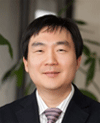 |
Biography: Dr. Young-June Choi is an associate professor at Ajou University, Korea. He received his B.S., M.S., and Ph.D. degrees from the Department of Electrical Engineering and Computer Science, Seoul National University, Korea, in 2000, 2002, and 2006, respectively. From Sept. 2006 through July 2007, he was a postdoctoral researcher at the University of Michigan, Ann Arbor, MI, USA. From 2007 through 2009, he was with NEC Laboratories America, Princeton, NJ, USA, as a research staff member. He joined Ajou University from September 2009 as a faculty member and founded Mobile Platform, Service, and Network (Mobile PLANET) Lab. He is an adjunct professor at Seoul National University, Korea, from September 2015 and an honorary professor at Xiangtan University, China, from Dec. 2013. Prof. Choi’s research areas include vehicular networking, device-to-device |
communication, dynamic spectrum access, IoT, video streaming, network security, and mobile power management. He has co-authored more than 200 international papers. He was OC member of IEEE SECON 2012, IEEE VTC Spring 2014, IEEE ICUFN 2013-2015, and ICTC 2014-2015. Prof. Choi has served as editor of JCN (Journal of Communications and Networks), ICT Express, and Elsevier Digital Communications and Networks and he is currently serving as guest editor of Springer PPNA (Peer-to-Peer Networking and Applications) and MIS (Mobile Information Systems). He is Director of Korean Institute of Communications and Information Sciences (KICS) since 2014, a member of TTA WG9013, and a senior member of IEEE. He was awarded a Gold prize at Samsung Humantech Thesis Contest in 2006.
Invited Talk 14: “Cellular Terminal Modem Development Trends and Future Prospects”
Dr. Chaehag Steve Yi, Master (VP), Samsung Electronics
Abstract:
An easy and active sharing of information is a main success factor of a data-driven world, where all individuals have become active participants. In the data-driven world, mobile devices such as smart-phones, tablets, and wearables have become indispensable to users for their everyday life. Major enablers of this data-driven world are advances in cellular and connectivity technologies which support wireless capacity enough to accommodate data traffic surge. Cellular mobile communications systems have been evolving, is evolving, and will evolve continuously. All cellular systems have been unified into the LTE system which introduces new features without pause such as D2D (Device-to-Device), LAA (Licensed Assisted Access), and FD-MIMO (Full Dimension-MIMO). Therefore, in the development of cellular terminal modem chipsets, one of the most important things is to implement new features on time and to respond to the market requirements. In other sides, to prepare mid/low end markets which become dominant markets, various types of integration of major components of smart-phone, such as application processor, baseband modem, RF device, power management, and wireless connectivity, have been attempted to make cost reduction. Furthermore, it becomes more important to provide hardware and software turn-key solutions.
An easy and active sharing of information is a main success factor of a data-driven world, where all individuals have become active participants. In the data-driven world, mobile devices such as smart-phones, tablets, and wearables have become indispensable to users for their everyday life. Major enablers of this data-driven world are advances in cellular and connectivity technologies which support wireless capacity enough to accommodate data traffic surge. Cellular mobile communications systems have been evolving, is evolving, and will evolve continuously. All cellular systems have been unified into the LTE system which introduces new features without pause such as D2D (Device-to-Device), LAA (Licensed Assisted Access), and FD-MIMO (Full Dimension-MIMO). Therefore, in the development of cellular terminal modem chipsets, one of the most important things is to implement new features on time and to respond to the market requirements. In other sides, to prepare mid/low end markets which become dominant markets, various types of integration of major components of smart-phone, such as application processor, baseband modem, RF device, power management, and wireless connectivity, have been attempted to make cost reduction. Furthermore, it becomes more important to provide hardware and software turn-key solutions.
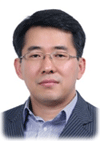 |
Biography: Dr. Chaehag Steve Yi received the B.S., M.E., and Ph.D. degrees in Electronics Engineering from Seoul National University, Seoul, Korea, in 1989, 1991, and 1996, respectively. He worked for the Electronics and Telecommunications Research Institute (ETRI), Taejon, Korea, on a part-time basis in 1992. He has worked for Samsung Electronics Co., Ltd. since 1993. He is currently a Master of Samsung Electronics and participates in the development and commercialization of cellular terminal modem chipsets. His research interests include digital communication theory, mobile communication systems, wireless connectivity, joint RF and baseband optimization, software-defined radio processor, and cellular modem architecture design. |
Invited Talk 15: “Wi-Fi Offloading: Mobile CDN’s Perspective”
Dr. Yung Yi, Professor. Dept. of Electrical Engineering, KAIST
Abstract:
This talk presents our recent research on Wi-Fi offloading. Wi-Fi offloading has been typically applied as a way of augmenting cellular networks’ capacity, but our research proposes a new angle taken from the mobile CDN system’s perspective. Exploiting people’s diverse mobility and traffic diversity that often allows delay tolerant delivery, time can be used as an important resource of reliably and cheaply delivering mobile contents. We have built a Wi-Fi offloading based mobile CDN system as well as an example application, and this talk summarizes the major challenges in doing so and how we solve them. Through this system development, we also discuss how to build up a good mobile ecosystem where users, content providers, and mobile network operators are all happy in the future.
This talk presents our recent research on Wi-Fi offloading. Wi-Fi offloading has been typically applied as a way of augmenting cellular networks’ capacity, but our research proposes a new angle taken from the mobile CDN system’s perspective. Exploiting people’s diverse mobility and traffic diversity that often allows delay tolerant delivery, time can be used as an important resource of reliably and cheaply delivering mobile contents. We have built a Wi-Fi offloading based mobile CDN system as well as an example application, and this talk summarizes the major challenges in doing so and how we solve them. Through this system development, we also discuss how to build up a good mobile ecosystem where users, content providers, and mobile network operators are all happy in the future.
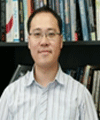 |
Biography: Dr. Yung Yi received his B.S. and the M.S. in the School of Computer Science and Engineering from Seoul National University, South Korea in 1997 and 1999, respectively, and his Ph.D. in the Department of Electrical and Computer Engineering at the University of Texas at Austin, USA in 2006. From 2006 to 2008, he was a post-doctoral research associate in the Department of Electrical Engineering at Princeton University. Now, he is an associate professor at the Department of Electrical Engineering at KAIST, South Korea. His current research interests include the design and analysis of computer networking and wireless communication systems, economic aspects of communication networks (aka network economics), and social networks. He was the recipient of two best paper awards at IEEE SECON 2013 and ACM Mobihoc 2013. He is now an associate editor of IEEE/ACM Transactions on Networking and Journal of Communication Networks. |
Special Session VI: Software-Defined Networking (SDN) & Network Function Virtualization (NFV)
1:10-12:50, October 30 (Friday), 2015
| Time | Title | Invited Speakers |
|---|---|---|
| 11:00-11:30 | Enabling Real-time Centralized Optimization for Global-Scale Video Delivery | Dr. Dongsu Han Professor Dept. of Electrical Engineering KAIST |
| Operator Issues Towards the Next Step for SDN/NFV | Dr. Eun Kyoung Paik Vice President KT |
|
| Beyond Features and Performance: SDN/NFV Security and Robustness | Dr. Jaewoong Chung CEO Atto Research |
Invited Talk 16: “Enabling Real-time Centralized Optimization for Global-Scale Video Delivery”
Dr. Dongsu Han, Professor, Dept. of Electrical Engineering, KAIST
Abstract:
Live video delivery is a rapidly growing business and its traffic is expected to reach a peak of 50 Tbps this year. Popularization of personal broadcasting and streaming mega-events are leading the trend. This surging popularity, however, can potentially challenge how Internet video delivery is done. Traditional video delivery networks (e.g., content delivery networks) are facing challenges because they must meet users’ demands for fast join times, high bitrates, and low buffering ratios, while minimizing their own cost of delivery and responding to issues in real-time. Wide-area latency, loss, and failures, as well as varied workloads (“mega-events” to long-tail), make meeting these demands more challenging. A recent analysis of video sessions suggested that a centralized controller could improve user experience by controlling the resource globally. However, enabling the centralized control raises many design and implementation issues due to the difficulty of quickly handling failures, a requirement of both operators and users. In this talk, we explore how we might enable the centralized control over a globally distributed network with real-time requirements. Our key approach is to utilize both centralized and decentralized control, while minimizing negative interactions between the two. To provide a concrete example, we present VDN, a practical approach to a video delivery network that uses a centralized algorithm for live video optimization. VDN provides CDN operators with real-time, fine-grained control. Despite of challenges resulting from the wide-area (e.g., state inconsistency, partitions, failures), we show that using a hybrid control plane increases video quality and decreases the delivery cost. This work is a joint work between KAIST and Carnegie Mellon University.
Live video delivery is a rapidly growing business and its traffic is expected to reach a peak of 50 Tbps this year. Popularization of personal broadcasting and streaming mega-events are leading the trend. This surging popularity, however, can potentially challenge how Internet video delivery is done. Traditional video delivery networks (e.g., content delivery networks) are facing challenges because they must meet users’ demands for fast join times, high bitrates, and low buffering ratios, while minimizing their own cost of delivery and responding to issues in real-time. Wide-area latency, loss, and failures, as well as varied workloads (“mega-events” to long-tail), make meeting these demands more challenging. A recent analysis of video sessions suggested that a centralized controller could improve user experience by controlling the resource globally. However, enabling the centralized control raises many design and implementation issues due to the difficulty of quickly handling failures, a requirement of both operators and users. In this talk, we explore how we might enable the centralized control over a globally distributed network with real-time requirements. Our key approach is to utilize both centralized and decentralized control, while minimizing negative interactions between the two. To provide a concrete example, we present VDN, a practical approach to a video delivery network that uses a centralized algorithm for live video optimization. VDN provides CDN operators with real-time, fine-grained control. Despite of challenges resulting from the wide-area (e.g., state inconsistency, partitions, failures), we show that using a hybrid control plane increases video quality and decreases the delivery cost. This work is a joint work between KAIST and Carnegie Mellon University.
 |
Biography: Dr. Dongsu Han is a professor at KAIST in the Department of Electrical Engineering and the Graduate School of Information Security. He received his Ph.D. degree from the Computer Science Department at Carnegie Mellon University in 2012. His research interests include Internet architectures, cloud and distributed systems, and Internet content delivery. As part of this thesis work, he worked on a new Internet architecture. |
Invited Talk 17: “Operator Issues Towards the Next Step for SDN/NFV”
Dr. Eun Kyoung Paik, Vice President, KT
Abstract:
SDN (Software-Defined Networking) and NFV (Network Function Virtualization) have been viewed as groundbreaking approaches towards a new paradigm of infrastructure that provides flexibility, service agility, and CAPEX/OPEX reduction. This talk illustrates the concept and realization of SDN and NFV focusing on operator perspective and issues. Firstly, it introduces the motivation and demands for SDN and NFV from the view of operators. Secondly, recent issues of standardization and open source development are discussed. Finally, deployment and evaluation issues are illustrated over classified areas.
SDN (Software-Defined Networking) and NFV (Network Function Virtualization) have been viewed as groundbreaking approaches towards a new paradigm of infrastructure that provides flexibility, service agility, and CAPEX/OPEX reduction. This talk illustrates the concept and realization of SDN and NFV focusing on operator perspective and issues. Firstly, it introduces the motivation and demands for SDN and NFV from the view of operators. Secondly, recent issues of standardization and open source development are discussed. Finally, deployment and evaluation issues are illustrated over classified areas.
 |
Biography: Dr. Eun Kyoung Paik is currently a Vice President in KT and leading the R&D in the areas of SDN, NFV, and Carrier Grade Cloud Infrastructure. She has been working on multimedia communications, mobility management, and SDN/NFV infra since she joined KT in 1992. She is leading SDN/NFV standardization in Korea as a Vice Chair of Future Internet Project Group affiliated with Telecommunications Technology Association (TTA), and serving for Open Standards and Internet Association (OSIA) as a Board Director. |
Invited Talk 18: “Beyond Features and Performance: SDN/NFV Security and Robustness”
Dr. Jaewoong Chung, CEO, Atto Research
Abstract:
Software-defined network and network function virtualization have been changing the landscape of network industry. They promise to deliver lower CAPEX and OPEX, service automation for operators, and dynamic flow control for operational intelligence. There has been an industry-wide move for traditional network vendors, server manufacturers, and startups to promote this technological disruption. While their main focus has been performance and features, it is obvious that the SDN/NFV technologies need to be deployed in production environments in a secure and robust way. This talk discusses the possible security and robustness issues in the current SDN/NFV implementations. Then, it presents the solutions and techniques to address the issues and concludes with suggestions for potential future research topics with regard to the security and robustness of the SDN/NFV technologies.
Software-defined network and network function virtualization have been changing the landscape of network industry. They promise to deliver lower CAPEX and OPEX, service automation for operators, and dynamic flow control for operational intelligence. There has been an industry-wide move for traditional network vendors, server manufacturers, and startups to promote this technological disruption. While their main focus has been performance and features, it is obvious that the SDN/NFV technologies need to be deployed in production environments in a secure and robust way. This talk discusses the possible security and robustness issues in the current SDN/NFV implementations. Then, it presents the solutions and techniques to address the issues and concludes with suggestions for potential future research topics with regard to the security and robustness of the SDN/NFV technologies.
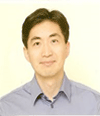 |
Biography: Dr. Jaewoong Chung is the CEO of Atto Research, specialized in software-defined network and network function virtualization. He is leading Atto Research’s efforts to develop market-leading products based on SDN/NFV technologies. He worked on next-generation x86 architecture and heterogeneous computing as a senior scientist at Intel Labs from 2010 to 2012. He developed new x86 architecture for die stacking, AMD64 extension, and many-core processors for cloud computing at AMD from 2008 to 2010. He developed J2EE Web Application Server at Tmaxsoft from 2001 to 2004 and worked on a GPS-based auto navigation system at Samsung Electronics from 1999 to 2000. His research interest spans transactional memory, parallel programming, chip multi-processor. He received the Bachelor’s degree and the M.S. degree from KAIST, and the Ph.D. degree in Electrical Engineering from Stanford University, USA. |
